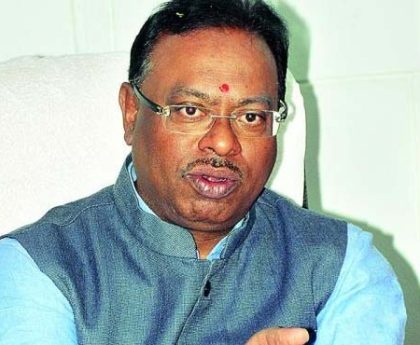[ad_1]
Be it demonetisation or now demonetisation, both these decisions were aimed at cracking down on the black money empire as well as fueling the challenge of counterfeit notes; But according to the RBI’s latest annual report, the number of fake notes seems to have increased rather than decreased; While there are 72 crore smartphone owners in the country, only 4 crore people use it due to security concerns regarding online transactions.
A common medium of exchange is currency. A government stamp gives currency universal recognition and people trust it. Currency is used in society on the basis of legal backing and public trust. Universality is a key feature of currency. Coins and paper notes can be called currency. One of the major functions of the Reserve Bank of India is to maintain the stability of the country’s monetary system. This includes bringing new currency into the country, distributing it, disposing of old notes and maintaining cash deposits in all banks. This work of the Reserve Bank and the economy of the country as a whole is being challenged in a way through fake currency notes. Counterfeit notes adversely affect the monetary system of the country. The country’s exchequer is losing. However, the trade in fake notes has been going on continuously through some malicious forces in the country, criminally minded persons and neighboring countries who are enemies of India. Advances in technology have further fueled such counterfeiters. Because, these notemafia have specialized in producing the exact notes.
According to the Reserve Bank of India’s latest annual report, the number of fake Rs 500 notes detected by the country’s banking system has increased by 14.6 per cent to 91,110 notes compared to last year. The number of fake notes of all types is about 2.25 lakhs. This includes 78,699 notes of Rs 100 and 27,258 notes of Rs 200. The fact that fake 200 rupee notes are introduced in the market shows how advanced the note mafia is. On November 8, 2016, Prime Minister Narendra Modi took a historic decision to demonetize Rs 500 and Rs 1000 notes. One of the main objectives behind this demonetisation decision was to curb the parallel economy of black money, take the country’s economy towards a cashless economy, curb Naxalism and terrorism along with cracking the black empire of fake notes. After the demonetisation, when the new currency notes were introduced by the Reserve Bank into the economy, the RBI claimed that these notes had very strict security measures and were very difficult to duplicate. But, now the Reserve Bank has testified how this claim is false through its own report.
A close reading of the details in the Reserve Bank of India report shows an increase of 8.4 per cent in the number of fake notes of Rs 20 face value. On the other hand, fake notes of Rs 10, Rs 100 and Rs 2000 have increased by 11.6 per cent, 14.7 per cent and 27.9 per cent respectively. According to the annual report published in May 2022, the number of counterfeit notes in the financial year 2021-22 has more than doubled as compared to the financial year 2020-21, reaching 79,669. This means counterfeiters have started paying more attention to the Rs 500 note. The Reserve Bank of India has seized 4.6 percent of the total counterfeit notes detected in the banking sector in the year 2022-23. The remaining 95.4 percent of fake notes have been identified in other banks. Meanwhile the expenditure on secure printing was Rs 4,682.80 crore. According to the NCRB report, fake notes worth Rs 245.33 crore have been seized across the country during the financial years 2016 to 2022.
Not that there are no attempts by the government and the Reserve Bank to undermine the empire of fake notes. Many new features are added to increase the security of the notes. But, along with that, the technology to imitate them also develops. According to the National Investigation Agency (NIA), Nepal and Pakistan routes are being used to send high-quality fake notes to India. Most of these notes are printed in Pakistan. It includes all the features that exactly match the Indian currency. Therefore, a common man often cannot understand which is a real note and which is a fake, even after checking closely.
Counterfeit notes have far-reaching harmful effects on economy and economy. Circulation of fake notes increases liquidity in the market. It results in inflation i.e. increase in inflation. Counterfeit notes are also widely used by terrorists against India. Recently, police seized 964 fake notes of Rs 500 which were brought for sale in Yavatmal in Vidarbha. The value of these notes was 4.82 lakhs. 1.14 crore currency notes were busted in Hingoli when a counterfeiting racket was busted.
13 fake notes of Rs 2000 have been found in Shirala. This means that even today such notes are being produced and used in the country. So controlling this is a big test for the RBI and the government. Printing of counterfeit notes is considered illegal worldwide. Because, the black business empire is spread all over the world. Hence, it remains a challenge for the security agencies around the world to trace the masterminds behind this. Counterfeit currency industry is a form of terrorism, it is treason. Shockingly, not only paper notes, but also the number of fake coins in the market is increasing. Identifying such coins is proving to be very difficult.
Last year, reports circulated that 58 trucks loaded with fake five-rupee coins were seized at the Jammu border. Investigative agencies may have tried to get to the root of the matter; But what exactly came out of it, did not come out.
Now the question remains what is the solution? There are two ways in this regard. One of the most acceptable options would be to impose a strict regime and punish those involved in counterfeiting with no mercy. Another option is to promote digital transactions more. Today, many countries around the world are reducing the printing of currency notes and emphasizing on doing maximum transactions through digital means.
In India too, the volume of transactions through UPI is increasing in the last two-three years. However, there is still fear in people’s minds regarding the security related to mobile banking. That is why despite the number of mobile phone users in India being 110 crore and 72 crore of them being smartphone users, only four crore people use mobile banking. In this background, the government needs to promote the mobile banking system more by emphasizing on making it completely safe and secure. Some concessions may be made for these transactions on occasion; But it can end the challenge of fake notes.
Suryakant Pathak
[ad_2]
For Latest Updates! Read Bombay Today





